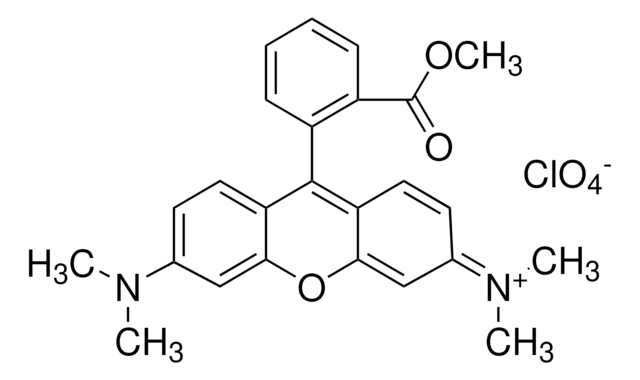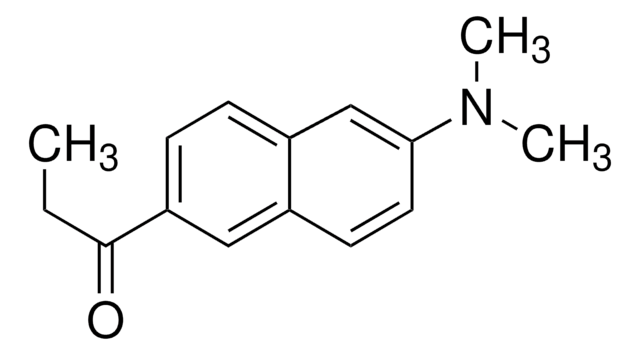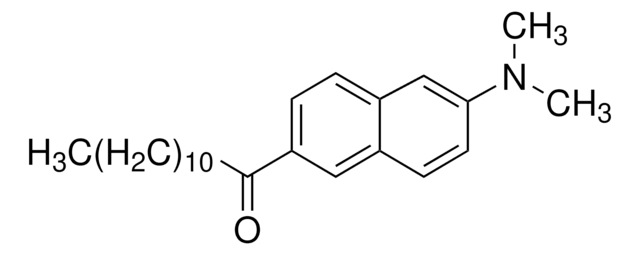87917
Tetramethylrhodamine ethyl ester perchlorate
suitable for fluorescence, ≥90% (HPCE)
Synonym(s):
TMRE, TMRE perchlorate
About This Item
Recommended Products
Quality Level
Assay
≥90% (HPCE)
form
solid
solubility
DMSO: soluble
alcohols: soluble
fluorescence
λex 540 nm; λem 595 nm in DMSO
suitability
suitable for fluorescence
storage temp.
2-8°C
SMILES string
[O-]Cl(=O)(=O)=O.CCOC(=O)c1ccccc1-c2c3ccc(cc3[o+]c4cc(ccc24)N(C)C)N(C)C
InChI
1S/C26H27N2O3.ClHO4/c1-6-30-26(29)20-10-8-7-9-19(20)25-21-13-11-17(27(2)3)15-23(21)31-24-16-18(28(4)5)12-14-22(24)25;2-1(3,4)5/h7-16H,6H2,1-5H3;(H,2,3,4,5)/q+1;/p-1
InChI key
NBAOBNBFGNQAEJ-UHFFFAOYSA-M
General description
The sorted cells containing TMRE perchlorate don’t interfere with the subsequent functional assays and hence are a preferred choice for the enrichment of functionally active, unbiased cell populations.
Application
TMRE perchlorate is also used to study Fullerene C 60 penetration into Leukemic Cells and the subsequent photoinduced Cytotoxic Effects.
Packaging
Other Notes
Signal Word
Warning
Hazard Statements
Precautionary Statements
Hazard Classifications
Acute Tox. 4 Oral - Eye Irrit. 2 - Skin Irrit. 2
Storage Class Code
13 - Non Combustible Solids
WGK
WGK 3
Flash Point(F)
Not applicable
Flash Point(C)
Not applicable
Personal Protective Equipment
Choose from one of the most recent versions:
Already Own This Product?
Find documentation for the products that you have recently purchased in the Document Library.
Customers Also Viewed
Articles
Nitric oxide (NO) as a signal transporter in neurons, endothelial cells and in the immune system.
Our team of scientists has experience in all areas of research including Life Science, Material Science, Chemical Synthesis, Chromatography, Analytical and many others.
Contact Technical Service










